The continuous and repeated epidemic has brought great impact on China's social economy and living order, and has brought great challenges to the development of the industry. However, in the face of pressure and challenges, China's paper industry, under the strong leadership of the Party Central Committee, is struggling to move forward. This year, many new policies, regulations and standards were implemented, and many new scientific and technological achievements and new products were emerging. At the same time, the implementation of the dual-carbon strategy was accelerated, energy efficiency and water efficiency were improved, and new momentum was gathered for the high-quality development of the industry.
04 China's paper demand slows down
For many years, China has been the largest participant in the pulp and paper industry, and it is still so - but in 2022, its demand has been some slowdown. China's COVID-19 zero clearing policy has had a negative impact on demand, with the prices of OCC and cardboard falling to the lowest level in two years. China's policy of prohibiting the import of recycled paper (RCP) of unclassified waste paper and its ban on the import of OCC also continue to affect its market.
The OCC export of the United States has shifted from China to export, and the import of some commodity pulp grades has remained unchanged or decreased, such as kraft pulp and refined pulp. Therefore, other Southeast Asian countries also benefited from it, as can be seen from the historical new capacity in 2022.
In addition, many large companies are considering or have withdrawn production from China. For example, at the beginning of December 2022, Apple accelerated its plan to transfer part of its production outside China. According to the Wall Street Journal, Apple is telling its suppliers to more actively plan to assemble Apple products in other parts of Asia, especially in India and Vietnam, and seeking to reduce its dependence on Taiwan's assemblers led by Foxconn Technology Group, which is one of the company's main suppliers and the operator of the world's largest iPhone factory in China.
05 Pay more attention to ESG initiatives
Environmental and sustainable development initiatives continue to influence corporate and policy-level decisions, and the impetus behind these efforts will continue to exist. Although EU countries are leading a lot of legislative work, other countries and major international brands have announced major sustainable development initiatives or have taken actions to achieve carbon neutrality as early as 2030, and the transition from plastics to the end of plastic pollution. These trends will continue to create significant opportunities for paper makers in the next decade. The following is a brief overview of some of the various initiatives that took place in 2022:
Earlier in 2022, heads of state, ministers of environment and other representatives from 175 countries adopted a historic resolution at the United Nations Environment Conference held in Nairobi to end plastic pollution by the end of 2024 and reach an internationally legally binding agreement.
• FEFCO (European Federation of Corrugated Board Manufacturers) announced the launch of a climate-neutral road map implemented by Climate.
• At the beginning of December 2022, the European Union reached an agreement to levy taxes on imported products according to the greenhouse gases emitted by manufacturing them, and for the first time incorporated climate change regulation into global trade rules.
• Ben and Jerry's joined the Pack4Good program, which promised to give priority to the use of paper packaging to reduce the damage to global forests. The company said that it would give priority to less influential solutions focusing on reducing waste and adopting next-generation innovation in packaging.
• Green Bay Factory of Green Bay Packaging has achieved net zero water use in the production of 100% recycled carton paper - this is the first UL (global safety leader, establishing the first global industrial standard of the same industry) to verify this environmental statement.
06 Increase investment in "Industry 4.0" technologies
Industry 4.0 refers to the fourth industrial revolution. Generally speaking, it describes the growth trend of automation and data exchange in manufacturing technology and processes. Industry 4.0 technology is built on nine pillars - big data is one of them. According to Business Research of Fortune, the global industry 4.0 market size in 2021 is 114.55 billion US dollars, which is expected to increase from 130.9 billion US dollars in 2022 (a year-on-year increase of 14%) to 377.3 billion US dollars in 2029, with a CAGR of 16.3% during the forecast period. As BDO explained in its 2021 Industry 4.0 survey, it is not surprising that those enterprises that adopted the Industry 4.0 strategy before the epidemic can better mitigate supply chain disruption and prepare for growth compared with those with lower degree of digitalization. This means that investing in Industry 4.0 technology (which has been the case for the past few years) when entering an uncertain period is more likely to predict the company's success than unnecessary costs. We see some examples of companies investing in Industry 4.0 related technologies in 2022, including:
• Metsa cardboard uses AI, because several of its factories have begun to use AI in various ways.
• Kimberly has created and filled a new role related to technological progress - Chief Digital Technology Officer. This role reflects Kimberly's increasing focus on digital technology in building brands and creating differentiated capabilities for the company.
• The software developed by ESCO can more easily realize digitalization, automation and connection to overcome today's packaging business challenges.
• Desma and IBM jointly developed AI solutions to improve the quality of recycled paper.
• Metsa Paper and CollectiveCrunch are committed to developing an AI application for identifying storms and pests.
Looking forward to 2023! In the new year, under the influence of multiple factors such as structural adjustment, the transformation of new and old kinetic energy, and the upgrading of digitalization and intelligence, the packaging and printing industry has emerged five new trends that deserve the attention of industry insiders.
